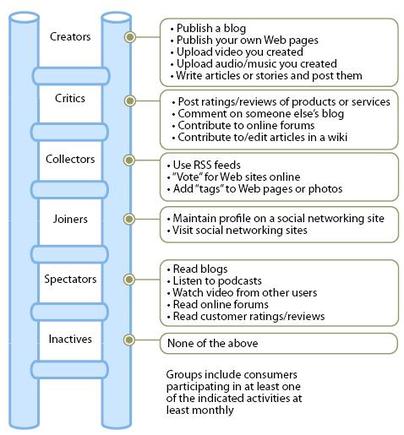“How do I get started?” is a question I often hear regarding social media marketing. In this article, I provide eight steps to help. Think of it as a checklist of must-do items that will put you in the best position to integrate social media into your overall marketing mix and take advantage of all this medium has to offer.
1. Define your marketing objectives
Social media needs to tie to one or more of your marketing goals, such as awareness building, product sales, and customer loyalty. Think about which goals are most important and prioritize them.
2. Develop personas
Boil your customer down to one or more personas in terms of demographics (age, gender, income, education) and psychographics (lifestyle).
3. Assess your audience
Determine your current relationship with your audience, such as:
- No relationship (prospects);
- Aware, but not made purchase;
- One-time purchasers;
- Repeat purchasers (enthusiasts);
- Advocates/fans.
4. Discover how your customer uses social media
Market research agency Forrester coined the term “technographics” to describe how people use social media. They refer to it as the Social Technographics Ladder, and break usage into six categories:
-
Creators. Those who actively engage in creating content, such as writing blog posts, uploading video to YouTube, recording podcasts, posting tweets, and other activities
-
Critics. Those who comment on blogs, participate in forums and write reviews of products
-
Collectors. These are the social bookmarkers who use sites such as Digg, Delicious and StumbleUpon
-
Joiners. These people join social networks such as Facebook and LinkedIn, but are less active in creating content
-
Spectators. These are the lurkers, the people who rarely engage, but who are important nonetheless because they consume content created by others
-
Inactives. Not everyone uses social media
Forrester’s "Social Technographics Ladder."
Forrester also created a profile tool to help businesses assess where their audience is with respect to the Social Technographics Ladder, and there are versions for both business-to-consumer and business-to-business. Though the tool is general in nature, it does help businesses get a more coherent sense of how their audience uses social media.
5. Locate your customers
Determine the social networks your customers can typically be found. This is accomplished through the use of social media monitoring software, which is designed to scour the web looking for mentions of your brand name, product names, competitors and other keywords. Not only do these tools aggregate mentions, but provide reports aon trending data for your keywords, help to identify influencers, and reveal on which social networks conversations are being held.
One of my favorite tools in this genre is Trackur. It is priced for small business and provides very comprehensive results.
In order for a business to thrive in this new social media-inspired milieu, listening becomes a mandatory step. People are talking to one another via social networks like Facebook and Twitter, and they trust what each other has to say.
If you can tap into the conversation that is taking place about your business, products, industry or competition. Then you can better understand who the influencers are, on which platforms they can be found, and what topics should be addressed. Listening is your on-ramp to engagement and is a first step in developing a comprehensive social media marketing strategy.
6. Analyze your competitors
Think about how your competitors are using social media. Can you emulate what they are doing? On the other hand, you may find they are doing very little, which means you have a golden opportunity to be a first mover in your niche.
7. Allocate resources
It would be foolish to build a social media marketing plan without first considering the costs. Though expenditures for hardware and software are often minimal, social media engagement does take time and as we all know, time is money. You need to consider how much of it you have available and whether others in your organization can carry some of the load. On the other hand, if you are a solo entrepreneur, this becomes a critically important step.
8. Measure results
List three metrics you will use to measure success. Social media needs to tie to your overall marketing goals. If driving traffic to your ecommerce website is an important goal, in what ways can social media support it? How much traffic would you expect to come from social media channels? How will you measure it?
Summary
There you have it, a social media marketing success checklist. These steps will take some time and effort, but following them can lead to a big payoff in terms of understanding your customers’ relationships to social media, and that really is the first step.





